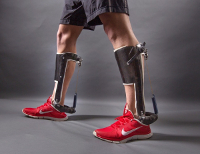Here’s a nice first hand account of Google cars from Emerging Technologies:
Google cars seem to be a little overly-cautious at intersections where visibility is limited: Think a T-intersection where a big truck or a bush blocks visibility for the road that needs to turn either left or right. The Google car I saw inched forward very slowly with a lot of pauses, as if it was stopping to get its bearings even though it obviously hadn’t pulled forward enough to “see” anything. It appeared very safe, but if I had been behind it I probably would have been annoyed at how long it took to actually commit to pull out and turn.
Google cars are very polite to pedestrians. They leave plenty of space. A Google car would never do that rude thing where a driver inches impatiently into a crosswalk while people are crossing because he/she wants to make a right turn. However, this can also lead to some annoyance to drivers behind, as the Google car seems to wait for the pedestrian to be completely clear. On one occasion, I saw a pedestrian cross into a row of human-thickness trees and this seemed to throw the car for a loop for a few seconds. The person was a good 10 feet out of the crosswalk before the car made the turn.
This is all well and good but will they drive your drunk ass home from the brew pub?
[Emerging Technologies: Californians are OK with Google self-driving cars]




